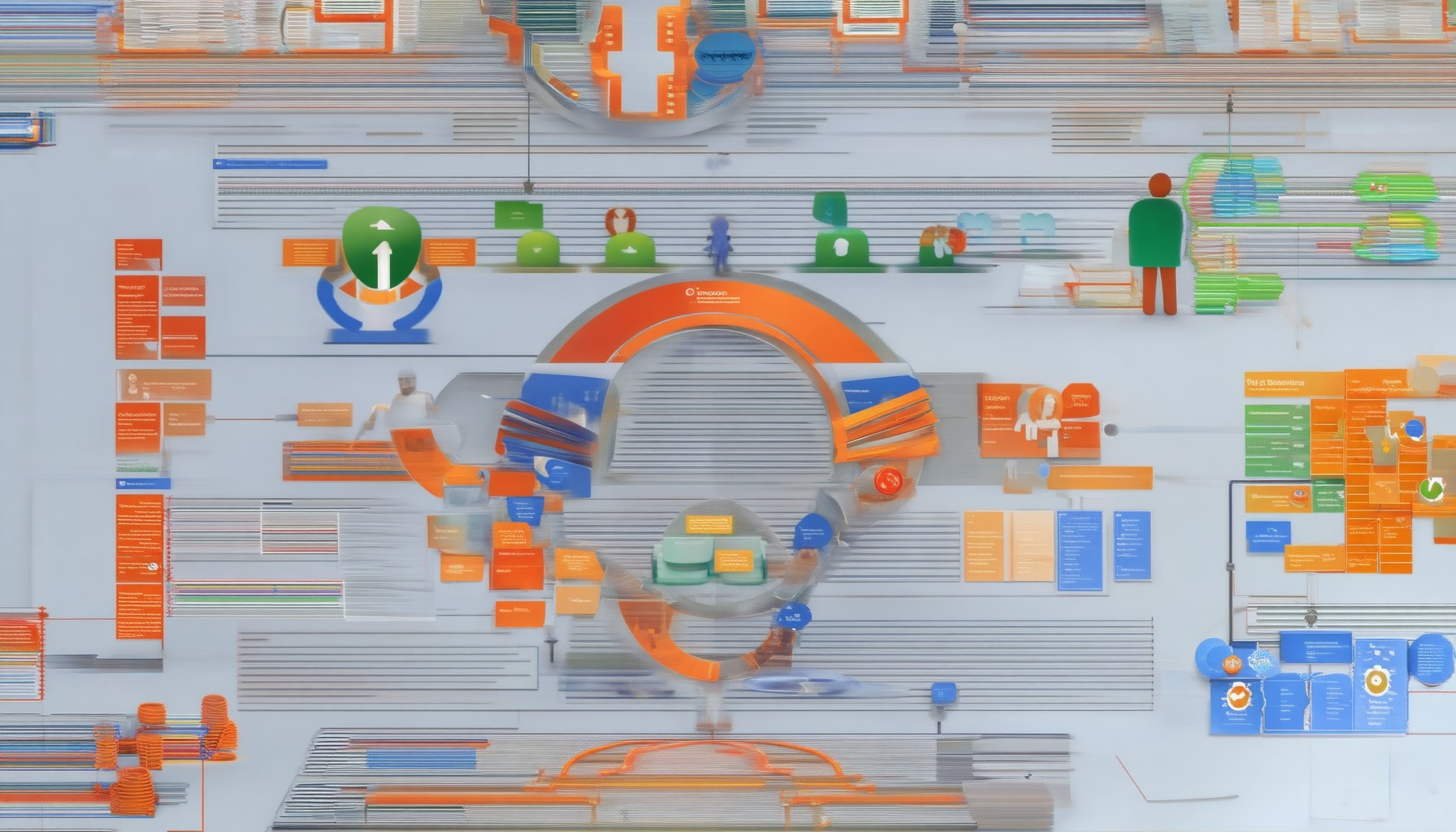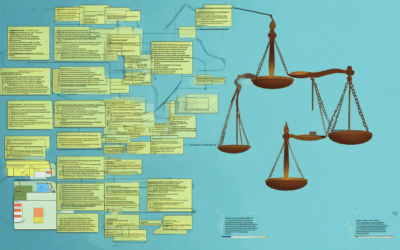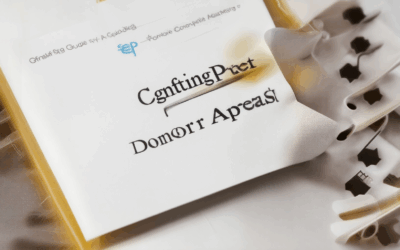Understanding the complexities of donor lifecycle management is crucial for nonprofits aiming to build lasting relationships with their supporters. In today’s competitive fundraising landscape, organizations must employ effective strategies to navigate the donor cycle, from initial identification through cultivation, engagement, retention, and stewardship. This comprehensive guide delves into the essential stages of the donor lifecycle, offering actionable strategies to streamline your fundraising efforts and maximize donor impact. By exploring the intricacies of the donor cycle, this article equips you with the knowledge needed to create meaningful connections and drive sustainable growth. Whether you’re looking to refine your current approaches or develop a new framework, this guide serves as an invaluable resource for anyone committed to fostering lifelong donor relationships. Join us as we uncover the key phases of the donor journey and discover proven tactics to ensure your organization thrives in the ever-evolving world of philanthropy.
Key Takeaways
- Effective Donor Lifecycle Management: Involves systematic tracking, segmentation, and optimization of donor movements to strengthen relationships and boost fundraising efforts.
- Data-Driven Insights: Comprehensive data collection and segmentation enable tailored strategies, enhancing donor engagement and retention.
- Moves Management vs. Donor Cycle: While the donor cycle focuses on the full relationship lifecycle, moves management targets specific actions to increase donor contributions and loyalty.
- Stages of the Donor Journey: Includes discovery, interest, consideration, contribution, and retention, guiding donors from awareness to long-term support.

The Donor Cycle of Management
The donor cycle is a sequential process that outlines the stages a potential donor goes through before making a contribution and beyond. Understanding this cycle helps organizations effectively manage donor relationships and maximize engagement. Below is a breakdown of the key stages:
1. Awareness
In this initial stage, donors first become aware of your organization. This could happen through various channels:
- Marketing campaigns and promotional materials
- Word-of-mouth from friends, family, or colleagues
- Community events or volunteer opportunities
- Social media presence and online ads
Awareness is the first step in building a relationship with potential donors, often triggered by a compelling story or clear call to action.
2. Interest
Once aware, donors may express interest by:
- Visiting your website
- Signing up for newsletters
- Following social media accounts
- Attending events or webinars
This stage is about capturing attention and providing enough information to justify further engagement.
3. Consideration
During consideration, donors evaluate whether your organization aligns with their values and causes they care about. Factors influencing this decision include:
- Transparency in your mission and operations
- Testimonials and success stories
- Clear communication of impact
- Trustworthy branding and messaging
At this point, donors are more likely to consider contributing based on the information gathered.
4. Decision-Making
When donors feel confident in your organization’s credibility and impact, they move to the decision-making stage. This involves:
- Evaluating the impact their contribution will have
- Researching alternative giving options
- Deciding the frequency and method of their contribution
Providing clear information about how their donations will be used can significantly influence their decision to give.
5. Retention
Retaining donors is crucial for long-term success. Strategies to keep donors engaged include:
- Providing regular updates on how their contributions are used
- Building long-term relationships through personalized communication
- Offering multiple ways to stay involved (e.g., volunteering, advocacy)
- Recognizing and thanking donors for their contributions
A satisfied donor is more likely to continue supporting your organization in the future.
By understanding and effectively managing each stage of the donor cycle, organizations can foster meaningful relationships and secure ongoing support from their donors.
What Are the 5 Stages of Donor Development?
The donor development process is a crucial strategy for nonprofit organizations to sustain their operations and achieve their mission goals. Below, we outline the five primary stages of donor development, along with actionable insights to maximize success.
1. Identification
The first stage involves identifying potential donors who align with your organization’s values and have the capacity to contribute. This phase includes:- Research : Utilize donor databases, wealth screening tools, and demographic analysis to identify high-potential prospects.- Segmentation : Group donors based on demographics, giving history, and engagement levels to tailor outreach efforts.- Referral Programs : Leverage word-of-mouth through satisfied donors and volunteers to recommend your organization to others.
2. Cultivation
Once identified, the next step is to nurture these prospects to build trust and rapport. Key activities include:- Personalized Communication : Tailor emails, letters, and calls to highlight the impact of contributions.- Events and Networking : Invitations to galas, auctions, or networking events can deepen relationships and showcase your cause.- Education : Provide information about your mission, impact reports, and success stories to inspire confidence in your work.
3. Solicitation
This stage involves making a direct appeal to secure donations. Effective strategies include:- Fundraising Appeals : Create compelling narratives that connect donors to your mission.- Matching Gifts : Encourage donors to match contributions made by others, amplifying the impact of their gift.- Major Gift Requests : For larger contributions, personalize approaches and leverage relationships built during earlier stages.
4. Stewardship
After securing a donation, fostering ongoing engagement ensures future contributions. Essential practices are:- Acknowledge Gifts : Send timely thank-you notes, receipts, and recognition in newsletters or on social media.- Regular Communication : Maintain contact through updates about your projects and impact reports.- Engagement Opportunities : Offer volunteer opportunities, event invitations, or exclusive content to keep donors involved.
5. Retention
Retaining donors is more cost-effective than acquiring new ones. Key strategies for this stage include:- Loyalty Programs : Recognize recurring donors with special perks or recognition.- Donor-Centric Communication : Personalize interactions and show appreciation for their continued support.- Legacy Planning : Educate donors on estate planning options to ensure their legacy contribution.
By systematically navigating these stages, nonprofits can build lasting relationships with donors, ensuring sustained funding and organizational growth. For more insights, explore our fundraising strategies and stewardship ideas .

Donor Engagement Life Cycle
The donor engagement lifecycle is a strategic framework used by nonprofit organizations to understand and manage relationships with their donors. It outlines the journey donors go through as they become aware of the organization, get involved, and continue to support it over time. Understanding this lifecycle helps nonprofits optimize their fundraising efforts and maximize donor retention.
The donor lifecycle typically consists of several stages, each requiring tailored approaches to engagement and communication:
1. Acquisition
The acquisition stage begins when a potential donor first learns about your organization. This phase focuses on attracting and converting strangers into donors. Key activities include:
- Marketing and outreach through digital channels, events, and social media
- Providing clear information about your mission and impact
- Creating compelling calls-to-action to encourage donations
- Utilizing tools like email marketing and donation pages
To succeed in this phase, ensure your messaging resonates emotionally and aligns with the donor’s values. Use platforms like NPO Expert to learn more about effective acquisition strategies.
2. Retention
Once donors have made their first contribution, the retention phase begins. The goal here is to strengthen the relationship and encourage ongoing support. Strategies include:
- Sending personalized thank-you notes and acknowledgment emails
- Providing updates on how their contributions are being used
- Engaging donors through newsletters and targeted campaigns
- Offering opportunities for repeat donations and recurring gifts
Retaining donors often requires showing appreciation and demonstrating the impact of their donations. Explore retention best practices on NPO Expert .
3. Upgrade
The upgrade phase aims to increase donor loyalty and engagement. This involves encouraging donors to contribute more significantly or in different ways. Tactics include:
- Introducing premium donation options or membership programs
- Inviting donors to special events or exclusive initiatives
- Providing volunteer opportunities or leadership roles
- Highlighting the impact of larger contributions
Upgrading donors requires understanding their capacity to give and motivating them with meaningful opportunities. Learn more about upgrading donor relationships on NPO Expert .
4. Re-engagement
Re-engagement occurs when donors have lapsed but may still be interested in reconnecting. This phase involves:
- Identifying inactive donors through analytics
- Sending targeted re-engagement campaigns
- Offering incentives to encourage them to return
- Providing fresh reasons to donate again
Reconnecting with lapsed donors can help recover lost contributions and rebuild trust. Discover effective re-engagement strategies on NPO Expert .
5. Legacy Planning
Legacy planning is about preparing donors to leave a lasting impact through estate planning. This phase includes:
- Educating donors about legacy giving options
- Providing resources on how to include your organization in their will
- Sharing success stories of legacy gifts
- Offering guidance on estate planning tools
Legacy gifts are a powerful way to secure long-term support. Learn how to effectively promote legacy planning on NPO Expert .
By understanding and managing each phase of the donor lifecycle, nonprofit organizations can foster deeper connections with their supporters and drive sustained impact.

Donor Moves Management Process
The donor moves management process involves a systematic approach to tracking, managing, and optimizing the movement of donors within your organization. Below is a detailed breakdown of the key steps involved:
Step 1: Data Collection and Segmentation
- Data Collection : Gather comprehensive information about donors, including their personal details, donation history, preferences, and engagement levels.
- Segmentation : Divide donors into distinct groups based on criteria such as donation frequency, giving patterns, and demographics to tailor strategies effectively.
Step 2: Donor Analysis and Strategy Development
- Analysis : Evaluate donor behavior, trends, and characteristics to identify opportunities for retention and growth.
- Strategy Development : Create targeted strategies to engage high-value donors, attract new contributors, and re-engage lapsed donors.
Step 3: Communication and Engagement
- Personalized Communication : Use tailored messages and channels to maintain relationships with donors, ensuring they feel appreciated and valued.
- Engagement Initiatives : Implement programs, events, and campaigns that encourage donor participation and increase their loyalty.
Step 4: Monitoring and Evaluation
- Monitoring : Track the effectiveness of donor moves through metrics such as retention rates, conversion rates, and overall engagement improvements.
- Evaluation : Regularly assess and adjust strategies based on performance data to ensure continuous improvement and alignment with organizational goals.
Step 5: Reporting and Documentation
- Reporting : Provide detailed reports to stakeholders, highlighting key outcomes, challenges, and recommendations for future actions.
- Documentation : Maintain accurate records of donor interactions, strategies, and outcomes to support decision-making and ensure accountability.
By following these steps, organizations can effectively manage donor moves, fostering stronger relationships and driving long-term success in their fundraising efforts.
Understanding Moves Management vs. the Donor Cycle
The donor cycle and moves management are two critical concepts in nonprofit fundraising, yet they serve distinct purposes and operate at different stages of donor engagement.
- Donor Cycle: The donor cycle refers to the entire lifecycle of a donor’s relationship with an organization. It begins when a potential donor expresses interest, progresses through initial donations, and continues until the donor passes away or stops supporting the cause. Key phases include identification, cultivation, solicitation, stewardship, and legacy planning.
- Moves Management: Moves management is a specialized strategy within the donor cycle focused on upgrading donors’ contributions. It involves systematically moving donors through incremental steps, such as increasing their donations, involving them in major gift initiatives, or encouraging them to leave a legacy gift. The goal is to maximize the lifetime value of each donor.
Key Differences:
- Scope: The donor cycle is a broad framework that includes all aspects of donor interaction, from initial engagement to long-term stewardship. Moves management, on the other hand, is a targeted approach to specific actions that increase donor contributions.
- Focus: The donor cycle emphasizes building and nurturing relationships at every stage, while moves management specifically targets actions that lead to increased giving levels or more frequent donations.
- Outcome: The donor cycle aims to retain and grow donors over time, whereas moves management is directly focused on achieving specific, measurable increases in donor contributions.
By understanding these differences, organizations can tailor their fundraising strategies to effectively manage both the overall donor relationship and specific moves that drive greater engagement and support.

The Stages of the Donor Journey
The donor journey is a sequential process that nonprofit organizations use to engage potential donors and convert them into loyal supporters. Below is a breakdown of the key stages:
- Discovery :
- The donor first learns about the organization through various channels, such as social media, email campaigns, events, or word-of-mouth.
- They may attend a webinar, visit the website, or receive a newsletter to gather initial information about the cause and the nonprofit’s mission.
- Interest :
- After discovering the organization, the donor becomes curious and wants to learn more.
- They might subscribe to newsletters, follow on social media, or attend events to engage further with the nonprofit.
- Consideration :
- The donor evaluates whether they align with the organization’s values and goals.
- They may research the nonprofit’s impact, read testimonials, or compare it with other causes to decide if they want to support it.
- Contribution :
- Once the donor feels confident in the organization’s cause, they take action by making a financial contribution.
- This could be a one-time gift or part of a recurring donation plan.
- Retention :
- After contributing, the donor’s engagement doesn’t stop.
- Nonprofits must nurture the relationship through personalized communication, acknowledgment of contributions, and ongoing updates about the impact of their donations.
- Regular engagement ensures the donor remains connected to the cause and continues to support in the future.
By understanding and effectively navigating these stages, nonprofits can create meaningful connections with donors, fostering long-term relationships and sustained support for their missions.





0 Comments